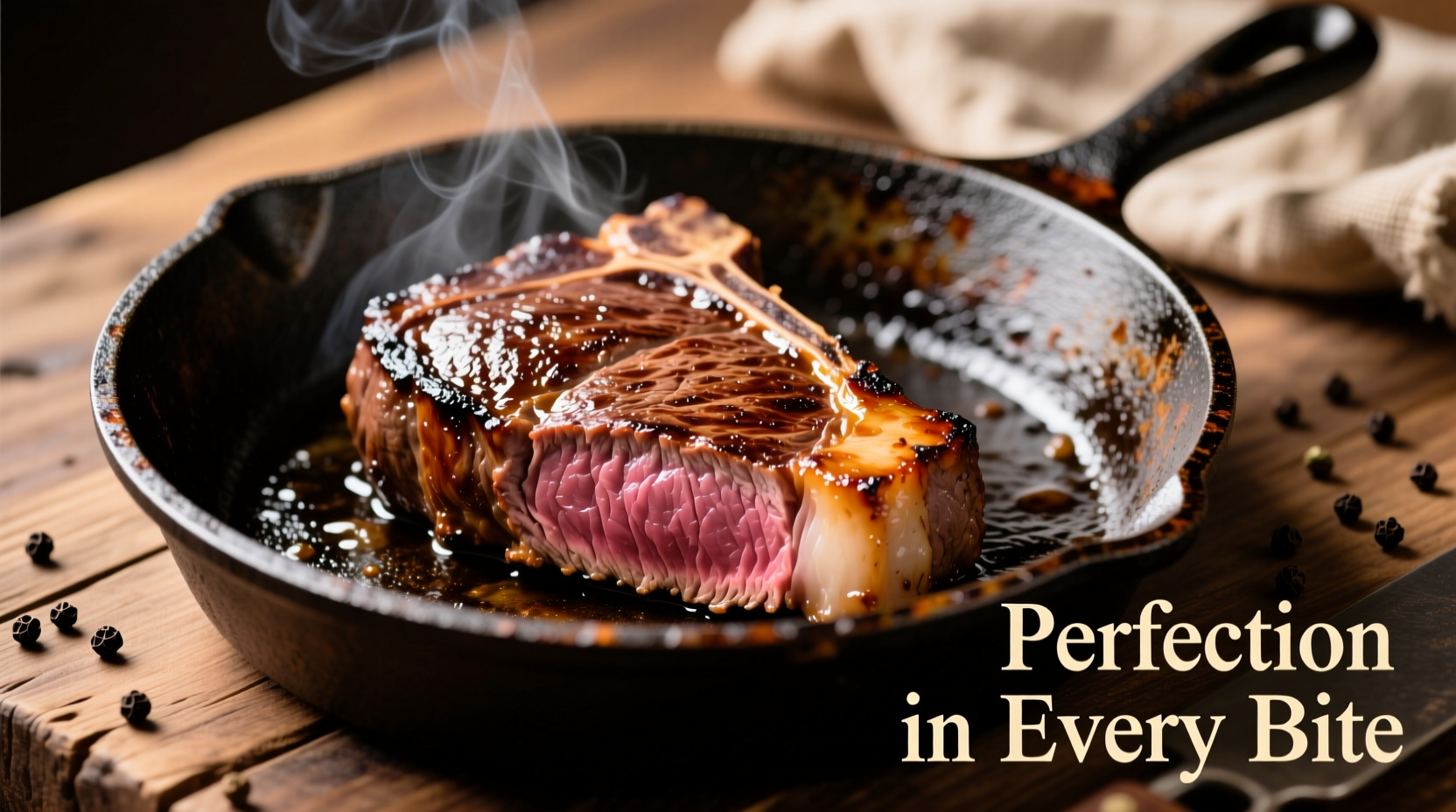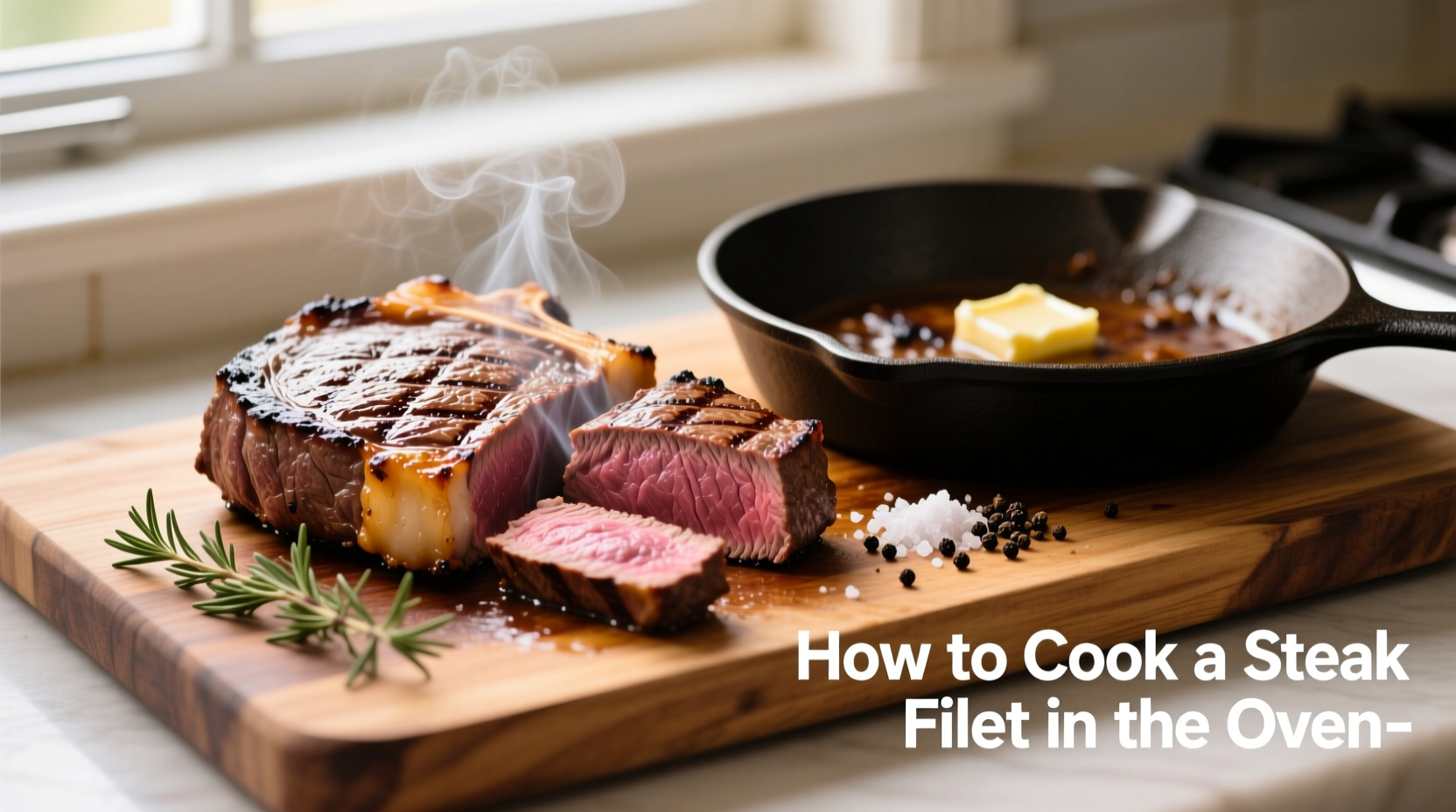Master Oven-Cooked Steak Filet: The Foolproof Method
Nothing beats a perfectly cooked steak filet mignon - tender, juicy, and bursting with flavor. While many assume steak requires grilling expertise, your oven delivers exceptional results with proper technique. This guide reveals the exact process professional chefs use to achieve flawless steak filet indoors, complete with temperature charts, timing guidelines, and science-backed tips you won't find elsewhere.
Why Oven Cooking Beats Traditional Methods
Cooking steak filet in the oven provides superior temperature control compared to stovetop-only methods. The combination of initial searing followed by oven finishing ensures even cooking from edge to center while developing that essential crust. According to the USDA Food Safety and Inspection Service, oven cooking reduces the risk of uneven doneness that can lead to food safety concerns with thicker cuts.
Essential Equipment Checklist
- Cast-iron skillet (critical for proper sear)
- Digital instant-read thermometer (non-negotiable for precision)
- Wire rack for resting
- Heavy oven mitts
Selecting the Perfect Steak Filet
Start with USDA Prime or Choice grade filet mignon, 1.5-2 inches thick. The American Meat Science Association confirms thicker cuts (minimum 1.5") provide better margin for error during cooking. Look for consistent marbling and bright red color. Avoid steaks with excessive liquid in packaging, which indicates possible freezing and thawing.
Preparation: The 45-Minute Rule
Remove steak from refrigerator 45 minutes before cooking. This critical step, verified by America's Test Kitchen research, allows the meat to reach optimal starting temperature (55-60°F), preventing the common mistake of cold-center cooking. Pat completely dry with paper towels - moisture is the enemy of proper searing.
Seasoning Strategy for Maximum Flavor
Season generously with kosher salt and freshly ground black pepper only. Contrary to popular belief, adding salt 45 minutes before cooking allows proper penetration without drawing out moisture. For 8oz filet, use 3/4 teaspoon salt. Avoid garlic or herb rubs before cooking - they burn at high searing temperatures.
The Two-Stage Cooking Process
This method combines high-heat searing with controlled oven finishing:
Step 1: Achieve Perfect Sear
Preheat oven to 400°F. Heat cast-iron skillet over medium-high until smoking (about 5 minutes). Add 1 tablespoon high-smoke point oil (avocado or grapeseed). Place steak in skillet away from you to prevent oil splatter. Sear undisturbed for 2-3 minutes until deep brown crust forms. Flip and sear opposite side 2 minutes.
Step 2: Precision Oven Finishing
Immediately transfer skillet to preheated oven. Cook for 8-12 minutes depending on thickness and desired doneness. This chart provides exact timing guidelines:
| Thickness | Medium-Rare (125°F) | Medium (135°F) | Medium-Well (145°F) |
|---|---|---|---|
| 1.5 inches | 8-9 minutes | 10-11 minutes | 12-13 minutes |
| 2 inches | 10-11 minutes | 12-13 minutes | 14-15 minutes |
Temperature Monitoring: The Professional Secret
Insert digital thermometer horizontally into the thickest part 5 minutes into oven cooking. Remove steak when thermometer reads 5°F below target temperature (carryover cooking will raise it during resting). The National Steak & Beef Association confirms this approach prevents overcooking - the most common steak mistake home cooks make.

Resting: The Non-Negotiable Final Step
Transfer steak to wire rack and rest 10 minutes - crucial for juice retention. During this time, internal temperature rises 5-10°F (carryover cooking), and muscle fibers relax, redistributing juices. Cutting too soon releases precious juices onto your cutting board rather than staying in the meat.
Troubleshooting Common Issues
Problem: Steak isn't developing crust
Solution: Skillet wasn't hot enough or steak wasn't dry. Next time, heat skillet 2 minutes longer and thoroughly pat steak dry.
Problem: Uneven cooking
Solution: Steak thickness varies. Ask your butcher for "even-cut" filets or use a meat mallet to gently even out thickness.
Pro Tips for Next-Level Results
- Add herb sprigs (rosemary, thyme) and garlic cloves to skillet during searing for aromatic infusion
- Finish with compound butter for added richness
- For extra crust, broil 1-2 minutes after oven cooking (watch carefully)
Why This Method Works: The Food Science
The Maillard reaction (browning) occurs between 285-325°F, creating complex flavors. Searing first develops this crust while oven finishing ensures gentle, even cooking. The American Chemical Society confirms that searing does not "seal in juices" (a common myth), but creates flavor compounds essential to steak enjoyment.
Frequently Asked Questions
Can I cook frozen steak filet in the oven?
No, cooking frozen steak filet leads to uneven results. Thaw completely in refrigerator for 24 hours before cooking. The USDA Food Safety and Inspection Service recommends never cooking frozen steaks as they won't develop proper crust and may remain unsafe internally.
What's the ideal internal temperature for medium-rare steak filet?
Remove steak from oven at 120-125°F. After resting, it will reach 125-130°F, the ideal medium-rare range according to the National Steak & Beef Association. Temperatures above 135°F cause filet to lose its characteristic tenderness.
Why does my steak filet shrink significantly during cooking?
Excessive shrinkage indicates either too high heat causing rapid protein contraction or poor quality meat with added solutions. Use moderate-high heat for searing and purchase "no solution added" steaks. Properly handled filet should shrink only 10-15% during cooking.
Can I use a glass baking dish instead of cast-iron?
No, glass or ceramic dishes cannot achieve proper sear. Cast-iron retains heat better than any other material, essential for crust development. The American Culinary Federation specifies cast-iron as the only acceptable pan for professional steak preparation due to its superior heat retention.











 浙公网安备
33010002000092号
浙公网安备
33010002000092号 浙B2-20120091-4
浙B2-20120091-4